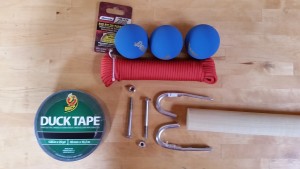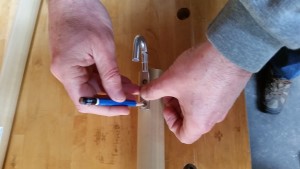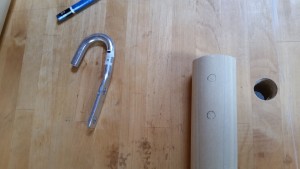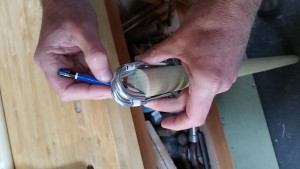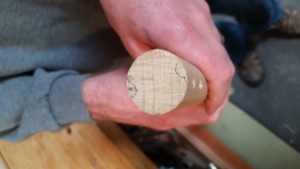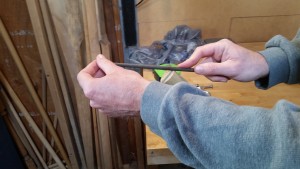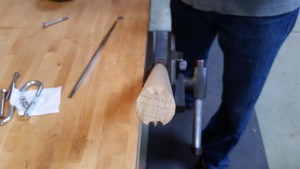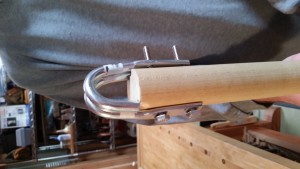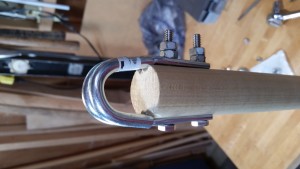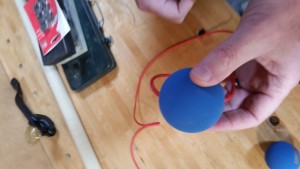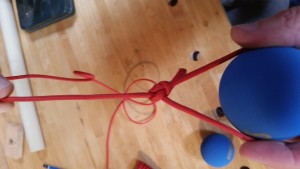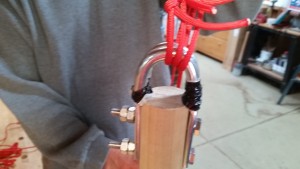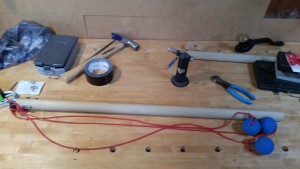Building a Flail Trainer
This is how we built a two-handed 3-headed flail trainer with parts you can find at your local hardware and sports store. The method described here isn’t the only way to build a flail and the training weapon here is experimental. If you build it there is every chance you could injure yourself with it if you get as crazy as my brother might. So… I warned you.
The parts list:
- 6-foot closet pole (1.8 meters)
- 2 matching screw-mounted rope hooks
- 2 bolts with matching nuts
- Nylon paracord
- Duct tape (of course)
- 3 racket balls
The Measurements
Our flail has a 3-foot handle and three approximately 3-foot “chains” including the heads.
Instructions
1. Cut the closet pole down to size. (For our first flail we tried a length of 3 feet (0.9 meters). It worked fine but we’re thinking of making the next handle slightly shorter by about 4 inches for a total haft length of 32 inches (0.8 meters).)
2. Use the rope hook as a guide for marking your drill target. We chose to bring the hook as far down into the pole as possible to increase the strength of the trainer.
3. Slowly drill all the way through the pole and remove any frayed edges.
4. Align the two Rope Hooks facing each other to form the “chain’s” looping anchor point on the flail. At this point you may want to remove some stock from the pole to ensure a snug fit by marking the end of the shaft and using a round file to remove the extra.
4. Now that you’ve created a perfect fit, fasten both Rope Hooks onto the shaft with the bolts so that they face each other to form a looping “chain” anchor point.
5. At this point you have created something dangerous with the exposed metal bolts. I recommend using a hacksaw to cut the exposed bolts off and then cover anything with sharp edges with a layer or two of tape. You want to minimize the possibility of cutting yourself if you accidentally hit yourself in the head.
6. Next, drill a hole through each of three racket balls.
7. Run your nylon paracord through the hole. To do this, we used fishing line.
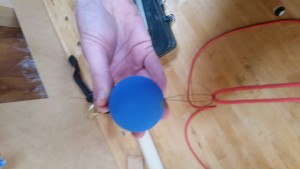
Push a loop of fishing line through the holes and then insert your paracord into the loop on the far side. Pull it through and, “Tada!” it is threaded.
8. Tie the cord just underneath the flail head using a bowline knot. ( Click here to see how to tie this knot! )
9. Tie it to the anchor point using the same bowline knot. (Repeat the process for all three flail heads.)
10. We used duct tape on the edges of the Rope Hook to avoid any grab on the nylon rope “chains”.
The Completed Flail Trainer
This is much lighter than an actual flail when you swing it around but you still get a scary amount of force with it such that hitting people is probably a terrible idea. While exercising the flail we found that swinging it at high speed didn’t seem to cause any problems with the racket balls but striking solid targets caused cracks around the drilled holes which would be eventual failure points.
Still, not bad for flail 1.0.


